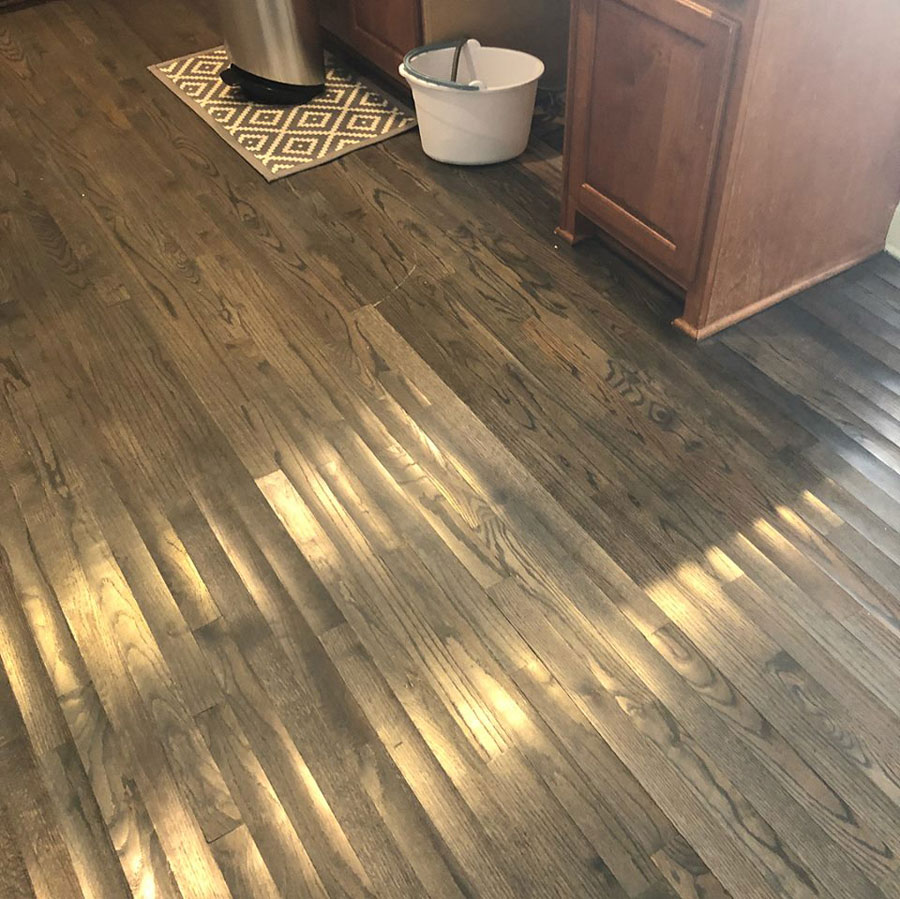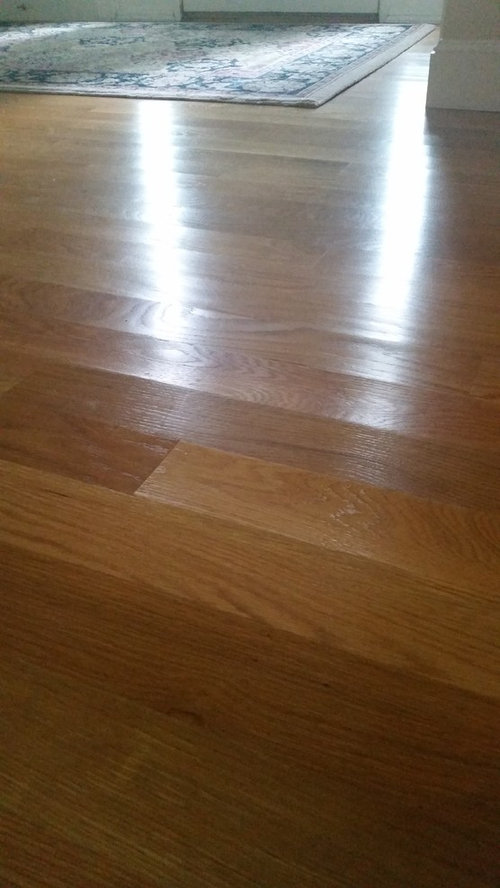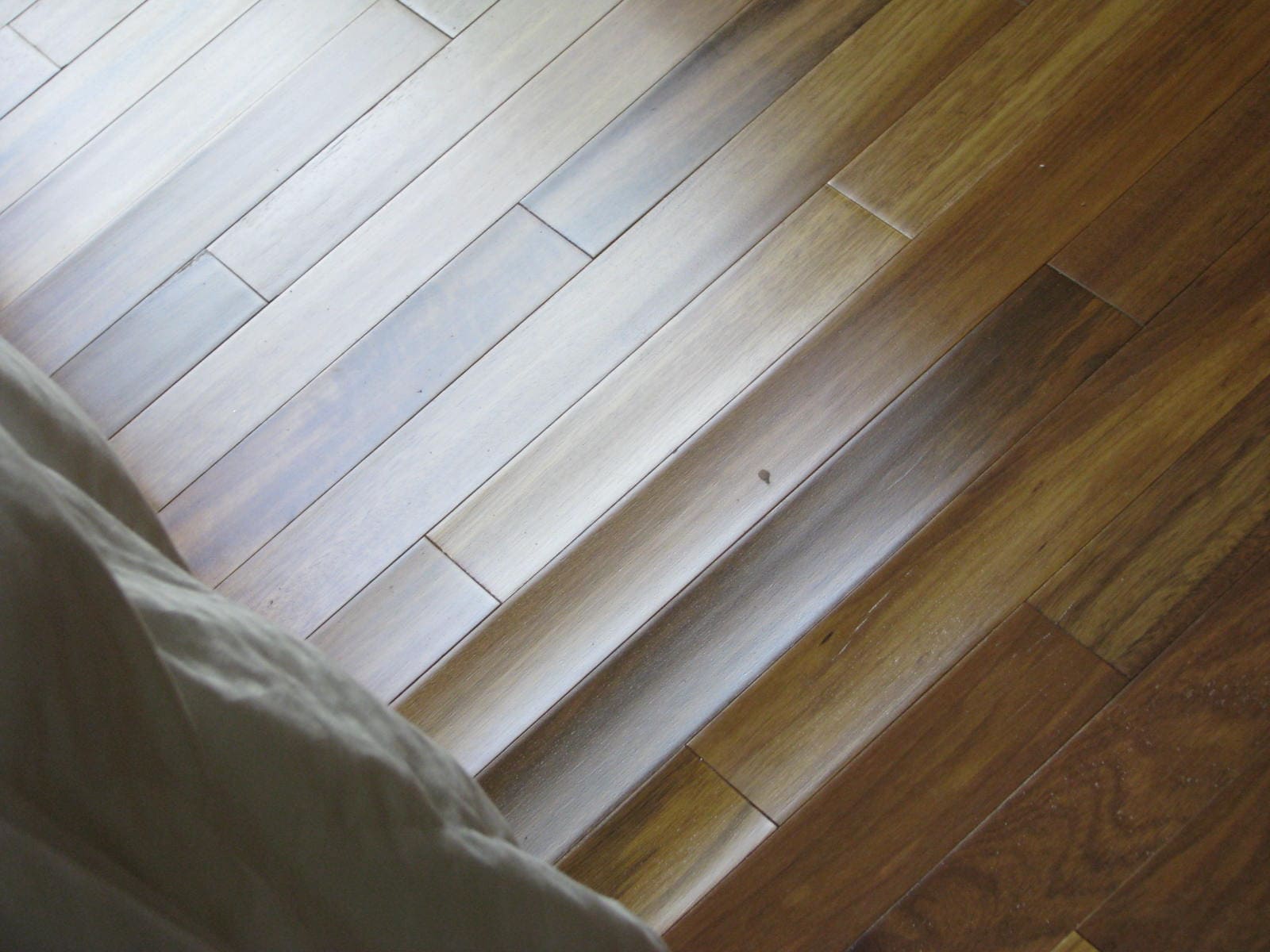Understanding the Causes of Hardwood Floor Cupping
Hardwood floor cupping is a common problem that occurs when the edges of the floorboards are higher than the center, creating a concave shape. This can be a frustrating issue for homeowners, as it not only affects the aesthetics of the floor but can also lead to structural damage if left untreated. To effectively address and prevent hardwood floor cupping, it is essential to understand its causes.
- Moisture Imbalance: One of the primary causes of hardwood floor cupping is moisture imbalance. Wood is a hygroscopic material, meaning it absorbs and releases moisture depending on the surrounding environment. When the moisture content of the air exceeds the moisture content of the wood, the boards absorb moisture and expand. This expansion can lead to cupping as the edges of the boards push against one another, causing them to rise.
- Excessive Moisture Exposure: Exposing hardwood floors to excessive moisture can accelerate cupping. This can occur due to factors such as flooding, leaks, or high humidity levels in the home. When moisture seeps into the wood, it causes the boards to swell and buckle, resulting in cupping. It is crucial to promptly address any water-related issues in the home to prevent cupping and subsequent damage to the flooring.
- Inadequate Subfloor Moisture Protection: Another cause of hardwood floor cupping is inadequate moisture protection between the subfloor and the hardwood planks. Moisture can infiltrate the subfloor through cracks or gaps, leading to moisture imbalance within the wood. This can cause the floorboards to absorb moisture from underneath, resulting in cupping. Proper installation techniques, including the use of moisture barriers, can help prevent this issue.
- Improper Installation: Improper installation of hardwood floors can also contribute to cupping problems. When the floorboards are not properly acclimated to the environment before installation, they may expand or contract after installation, leading to cupping. Additionally, inadequate spacing between the boards or improper nailing techniques can cause the boards to push against each other, resulting in cupping.
- Insufficient Expansion Gaps: Expansion gaps are essential to allow the wood to naturally expand and contract with changes in temperature and humidity. Without sufficient gaps between the floorboards and the walls or fixed objects, the wood has no room to expand, which can lead to cupping. It is important to follow installation guidelines and leave appropriate expansion gaps to prevent this issue.

The Effects of Hardwood Floor Cupping on Your Home
Hardwood floor cupping, also known as moisture-related floor cupping, is a common problem that can have significant effects on your home. This phenomenon occurs when the hardwood floorboards warp and develop a concave shape, with the edges higher than the center. Cupping is typically caused by excessive moisture or water damage that penetrates the wood, causing it to expand and contract unevenly.
One of the primary effects of hardwood floor cupping is the compromised structural integrity of your flooring. Cupped floors can feel uneven and unstable underfoot, making it uncomfortable to walk on. Additionally, cupping can lead to gaps between the floorboards, resulting in an unsightly and potentially hazardous surface.
Another consequence of cupping is the potential for mold and mildew growth. As moisture becomes trapped between the cupped floorboards, it creates a perfect environment for mold spores to thrive. This not only poses health risks to the occupants of the home but also presents a challenge in terms of remediation and restoration.
Beyond the physical effects, cupped hardwood floors can also impact the aesthetic appeal of your home. The warped and uneven surface can make your floors look old, worn, and neglected. This can significantly diminish the overall value and aesthetic appeal of your property, affecting its marketability and resale potential.
Furthermore, cupping can also extend beyond the floors and affect other areas of your home. Moisture that seeps into the subfloor can lead to structural damage, affecting the stability and integrity of the entire foundation. Additionally, cupping can spread to adjacent walls and cause paint to peel, wallpaper to bubble, and even damage electrical components.
Hardwood floor cupping can have a range of detrimental effects on your home. From compromising the structural integrity of your flooring to promoting mold growth and diminishing aesthetic appeal, it is crucial to address this problem promptly to minimize further damage. Regular maintenance, proper moisture control, and swift remediation are key to preventing and mitigating the effects of hardwood floor cupping.

How to Prevent and Repair Hardwood Floor Cupping
Hardwood floor cupping is a common problem that occurs when the edges of the hardwood planks are higher than the center, creating a concave or “cupped” appearance. This can be caused by various factors such as moisture imbalance, humidity changes, or improper installation. In this section, we will discuss preventative measures as well as repair techniques to address hardwood floor cupping problems.
Preventive Measures
Maintain consistent humidity levels: Fluctuations in humidity levels can cause the hardwood planks to expand and contract, leading to cupping. To prevent this, it is important to maintain a constant humidity level in your home. Use a humidifier during dry seasons and a dehumidifier during humid seasons to control the moisture in the air.
Avoid excessive moisture exposure: Excess moisture can seep into the wood and cause it to swell, leading to cupping. Take precautions to prevent water spills, leaks, or excessive humidity in areas with hardwood flooring. Wipe up any spills immediately and use mats or rugs in areas prone to moisture, such as kitchens and bathrooms.
Use proper installation techniques: Improper installation can also contribute to hardwood floor cupping. Ensure that the flooring is properly acclimated to the environment before installation and follow the manufacturer’s guidelines for installation. Proper subfloor preparation and nailing techniques are also crucial in preventing cupping.
Repair Techniques
Identify the cause: Before proceeding with any repairs, it is important to identify the underlying cause of the cupping. Is it due to moisture imbalance, improper installation, or other factors? This will help determine the appropriate repair method.
Address moisture issues: If the cupping is caused by moisture imbalance, it is essential to address the moisture issue first. Identify and rectify the source of excess moisture, whether it’s a leak or high humidity levels. Once the moisture issue is resolved, allow the floor to dry out naturally before proceeding with repairs.
Sanding and refinishing: In some cases, sanding and refinishing the hardwood floor may be necessary to remove the cupped appearance. This involves sanding down the higher edges of the planks to level them with the center. After sanding, the floor can be stained and finished to restore its original appearance.

cupped hardwood floors

cupped hardwood floors

Avoid Cupping and Buckling in Hardwood Floors – Twenty u0026 Oak

What Causes Wood Floor Cupping u0026 What To Do

Hardwood Floor Water Damage Problems Water Damage Restoration

Related articles:
- Compare Bamboo And Hardwood Flooring
- Refinishing Hardwood Floors Cost Estimates
- Sundance Hardwood Flooring Reviews
- Cheap Red Oak Hardwood Flooring
- Hardwood Flooring On The Ceiling
- How To Clean Candle Wax From Hardwood Floor
- Hardwood Floor Compass Inlay
- Where To Find Bona Hardwood Floor Cleaner
- Shaw Brazilian Cherry Hardwood Flooring
- Maple Hardwood Flooring Durability